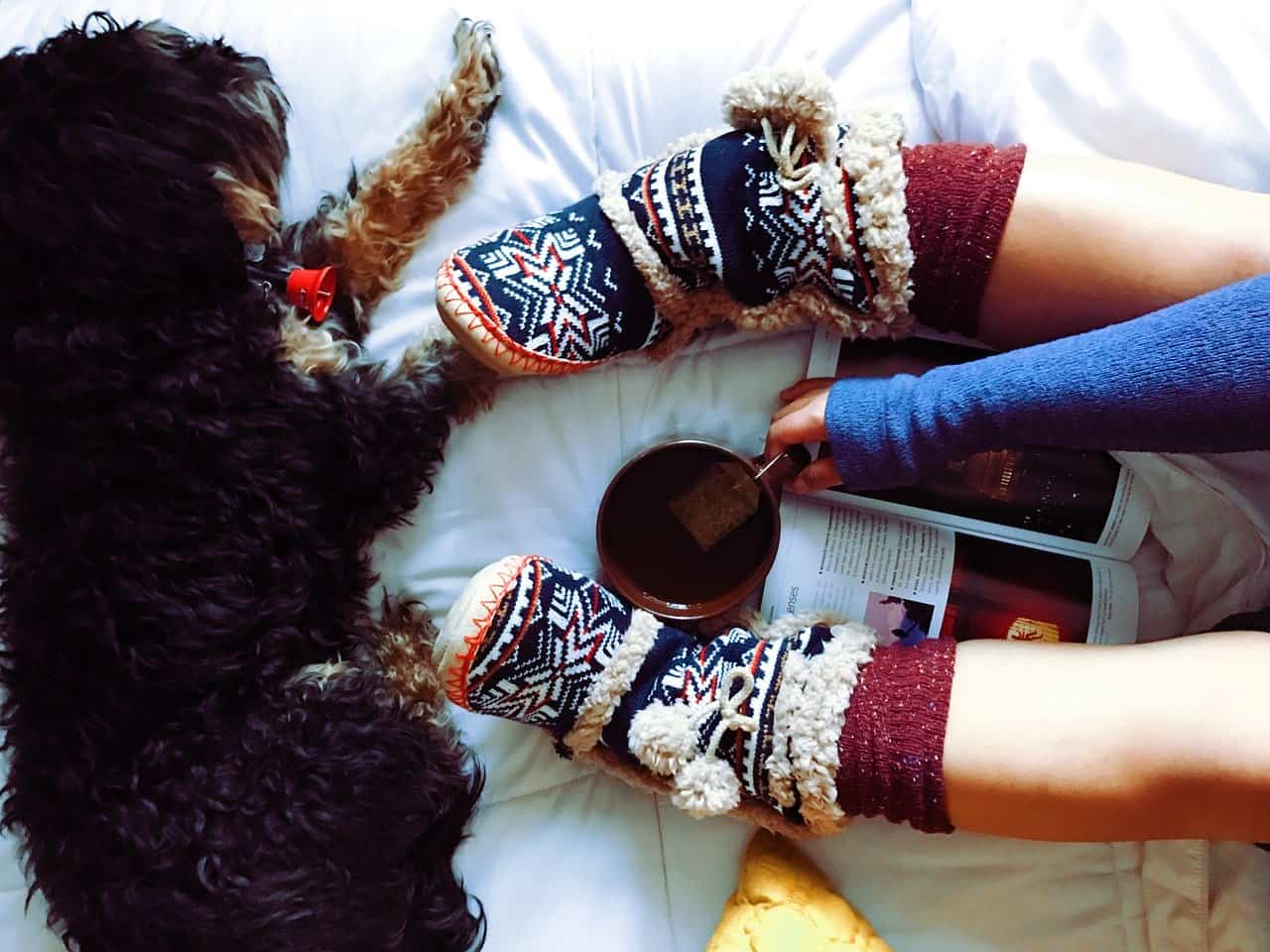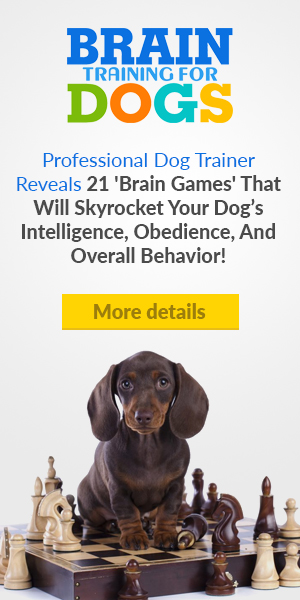In a nutshell, the best ways to stop a dog from eating socks is to keep socks in a drawer, play and distract your dog, teach him proper commands and use treats and toys.
Let’s find out how in detail…
How to Stop a Dog Eating Socks
- Keep your socks in drawers or baskets and out of your dog’s reach
- Your dog might be understimulated — play with it, take it for walks, teach it new commands
- Teach your dog what it shouldn’t chew on using treats and chewy toys
- Teach your dog to respond to ‘drop it’ and ‘leave it’ commands
Dogs are humans’ best friends, but sometimes we really don’t understand their choices.
For instance, why do they feel the need to chomp on inedible objects, like socks?
Not only are socks not tasty, but they can also cause serious digestive issues and bring your dog to a surgery table.
Sadly, there’s no reasoning with your beloved pet; so you need to learn how to stop a dog eating socks in other ways.
Why Dogs Eat Socks
Your dog regularly gets delicious food, and yet it still goes after your socks as if they were a particularly appetizing dessert.
It makes absolutely no sense, you think. But you have to try and understand how your dog thinks.
Only then can you figure out how to stop a dog from eating socks.
They Like Attention
Your dog isn’t dumb — it notices that you react as soon as it grabs your socks. From the dog’s point of view, the two of you are playing a fun little game.
Your role is to chase it around, trying to take the sock away, while the dogs are, of course, not to let you succeed.
If you come too close, your dog sees only one way to win the game — by swallowing the prize.
They Suffer from Pica
If your dog has a general propensity for eating inedible objects — such as rocks, dirt, or leaves — it could be suffering from a condition called pica.
What causes pica isn’t always clear, but it is usually linked to digestive and metabolic issues or behavioral disorders.
If you suspect your dog’s suffering from pica, take it to a vet.
They will determine whether your suspicions are true and what might have caused the condition.
They See Socks as Resources
You might have noticed that your dog can act very protective over its bone or favorite toy.
You and your dog normally get along great, but once you approach its valued treasure, it starts growling and snapping at you.
Dogs can exhibit similar behavior around socks. But while you’re not likely to chase your dog when it takes a bone, you’ll definitely try to take your socks back.
That’s when dogs decide to take extreme measures to protect their treasure and they swallow the socks.
Some dogs don’t wait that long, though — they swallow them right off the bat as it’s the only way to keep them safe.
How to Stop a Dog Eating Socks
Now that we’ve explored a dog’s thought process before it eats socks, we can move on to making sure it doesn’t happen.
Keep in mind that it’s not easy, and the same technique won’t work on every dog.
We’ve chosen a few most effective ones, but it’s up to you to find out what works best for your furry friend.
Don’t Let Socks Lie Around
Obviously, if your dog is a voracious sock eater, the first step is to put all socks out of its reach.
Don’t leave them on the floor of the rooms that your dog has access to. Instead, put them in drawers or baskets and always remember to check the rooms for any misplaced socks.
But no matter how careful you are, accidents happen.
You might lose a pair of socks under the couch where you can’t see it, but your dog can.
Or, if you have small children, they might not understand why they have to be careful, or could simply forget to be.
So while prevention is an important step, it usually works best paired up with another technique.
Mental and Physical Stimulation Works Miracles
When your dog starts eating socks as a way to get a rise from you, you can assume it’s lacking mental or physical stimulation.
A tired dog that spent a few hours playing, strolling, or interacting with you won’t feel any interest in socks.
However, a bored, understimulated dog will.
So give your dog some attention.
Teach it new commands, give it toys to play with, and take it out for long walks.
Not only will your dog stop eating socks, but it will generally be happier and behave better.
Show Your Dog What It Should and Shouldn’t Chew on
Dogs generally don’t want to upset their owners. On the contrary, they really want to make you happy.
Thus, when you continuously show your dog what sort of behavior you disapprove of, it will start avoiding it.
Here is how you can use that in the sock-eating scenario:
- When you see your dog chew on a sock, immediately stop it.
- Show it that you don’t like that kind of behavior by firmly and loudly telling it “No” or gesturing.
- Give it a toy to chew on instead.
- When your dog focuses on the toy instead, reward it by giving it treats.
Make sure to do this as often as you can, so that the dog would eventually learn what it can chew on, and what it should avoid.
Teach Your Dog ‘Drop It’ and ‘Leave It’ Commands
Regardless of whether your dog is a sock eater or not, teaching it to leave and drop things is extremely useful.
And if you do have a dog who likes to munch on socks, this command can save you a lot of nerves and money.
Spend 15 minutes every day practicing with your dog using items that it normally doesn’t eat.
Don’t yell at your dog or be impatient with it — it’s likely to only make the process more difficult.
Instead, create a positive atmosphere and reward it with treats every time it makes progress.
For a step-by-step guide on training your dog, you can take a look at this video.
After the training is complete, you won’t have to fight with your dog over socks anymore.
Simply say ‘Leave it’ if the dog is headed towards a sock, or ‘Drop it’ if it’s already chewing it, and your dog will obey.
Don’t forget to reward good behavior even after training is done though!
Conclusion
Now you have some basic knowledge of how to stop a dog from eating socks, so you can help it break this bad habit.
Although it may not always go smoothly, remember — your dog isn’t doing this to spite you. Instead of getting angry and punishing it, be gentle and patient.
Believe us, you’ll get much further with a kind approach, and your bond with your dog will be stronger!


